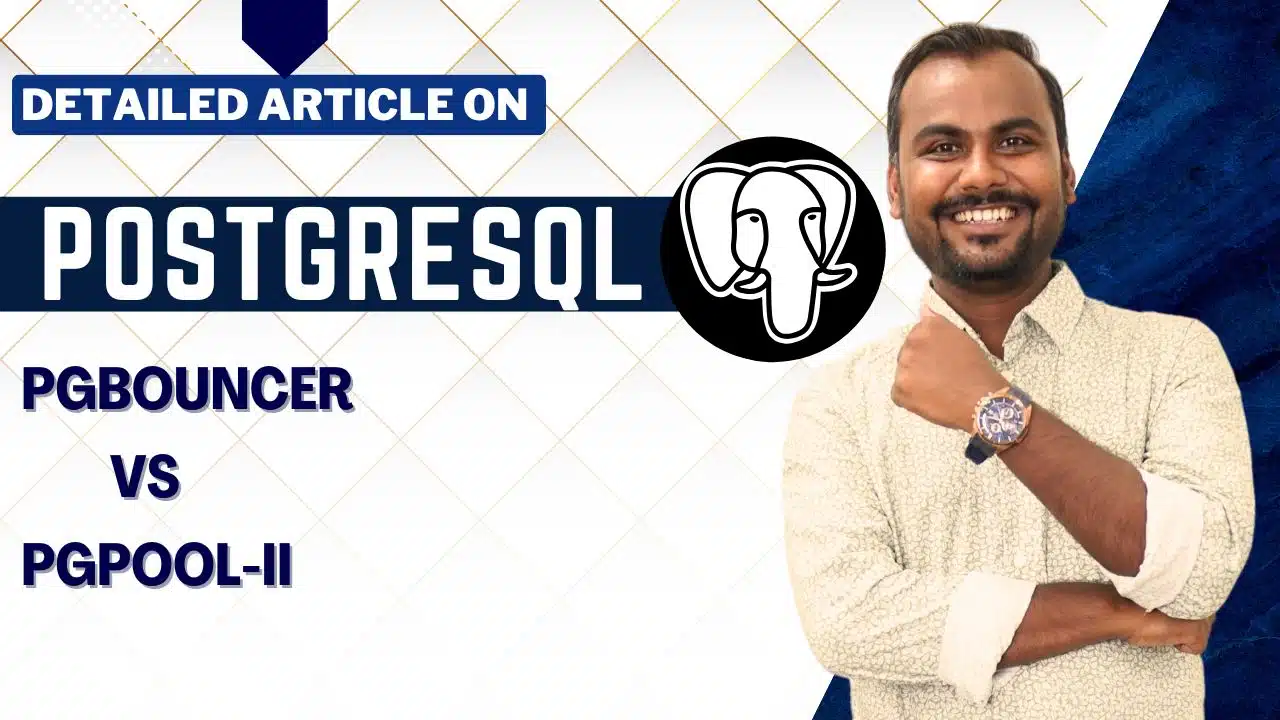PgBouncer vs Pgpool-II
PostgreSQL connection pooling
PgBouncer vs Pgpool-II: The Two Popular Choices
PostgreSQL offers multiple pooling options, but PgBouncer and Pgpool-II are the most widely used.
Let’s explore how they differ and when to use each.
PgBouncer — Lightweight Connection Pooler
PgBouncer is a lightweight, high-performance connection pooler designed purely for managing database connections.
🔸 Key Features:
-
Handles thousands of connections efficiently.
-
Supports multiple pooling modes: session, transaction, and statement.
-
Minimal memory footprint and easy configuration.
-
Ideal for high-concurrency web applications.
⚡ Advantages:
-
Extremely fast and resource-efficient.
-
Simple to set up and maintain.
-
Reduces PostgreSQL backend connection overhead significantly.
⚠️ Limitations:
-
Only manages connections — no query routing or replication support.
-
Doesn’t support parallel queries or load balancing.
✅ Use PgBouncer when:
You need a lightweight solution for managing a large number of application connections without additional complexity.
Pgpool-II — Full-Featured Middleware
Pgpool-II is a more feature-rich connection pooler that also provides load balancing, query caching, replication, and failover management.
🔸 Key Features:
-
Connection pooling plus query routing and replication.
-
Load balances read queries across replicas.
-
Supports parallel query execution.
-
Offers automated failover and health checks.
⚡ Advantages:
-
All-in-one tool for pooling, replication, and failover.
-
Improves both performance and high availability.
-
Works well in complex PostgreSQL cluster environments.
⚠️ Limitations:
-
More complex to configure and maintain.
-
Slightly higher latency compared to PgBouncer due to extra features.
✅ Use Pgpool-II when:
You need advanced functionality — like load balancing, replication management, or high availability — beyond simple connection pooling.
PgBouncer vs Pgpool-II — Comparison Summary
| Feature | PgBouncer | Pgpool-II |
|---|---|---|
| Purpose | Lightweight Connection Pooler | Full-Featured Middleware |
| Performance | Faster and lightweight | Slightly slower due to overhead |
| Load Balancing | ❌ No | ✅ Yes |
| Replication | ❌ No | ✅ Yes |
| Query Caching | ❌ No | ✅ Yes |
| Failover Support | ❌ No | ✅ Yes |
| Setup Complexity | Simple | Complex |
| Best Use Case | High-concurrency web apps | HA/replicated database clusters |
Conclusion
PostgreSQL’s memory management is both powerful and flexible, but it requires careful tuning for different workloads. Understanding how parameters like shared_buffers, work_mem, and wal_buffers interact is essential for achieving top-tier performance, reliability, and scalability.
At Learnomate Technologies, we specialize in PostgreSQL performance optimization, tuning, and database management solutions — helping organizations achieve maximum database efficiency and stability.
At Learnomate Technologies, we make sure you not only understand such cutting-edge features but also know how to implement them in real-world projects. Whether you’re a beginner looking to break into the database world or an experienced professional upgrading your skillset—we’ve got your back with the most practical, hands-on training in Oracle technologies.








Let’s keep learning, exploring, and growing together. Because staying curious is the first step to staying ahead.






